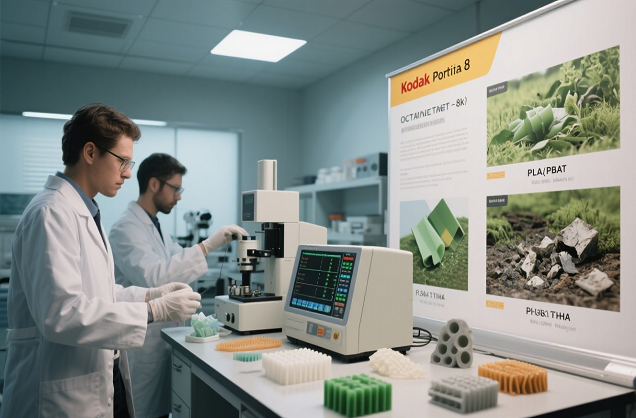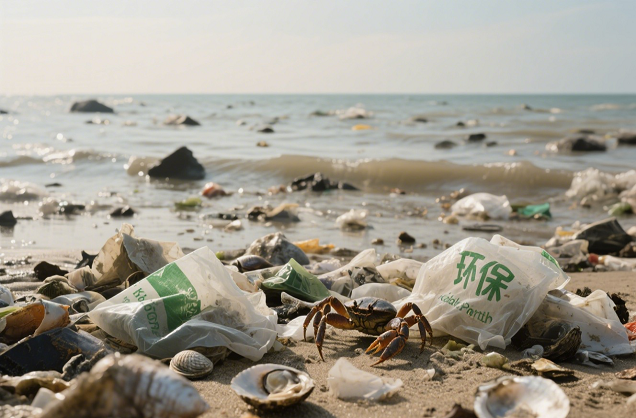The ultimate PLA/PBAT/PHA comparison: which material is truly eco-friendly?
Biodegradable Material Choice Dilemma
The global bioplastics market has reached $18 billion by 2024, but consumers are often confused when facing the three mainstream materials: PLA, PBAT and PHA. According to the latest research conducted by the International Sustainable Materials Association (ISMA):
73% of consumers are unable to differentiate between these three materials
65% of "eco-friendly" products have exaggerated promotions
Only 12% of users understand the degradation conditions required for different materials

Part I: Comparison of Basic Characteristics
1.1 Raw Materials and Production Process
Characteristics PLA PBAT PHA
Raw Material Sources Corn/Sugarcane Starch Petroleum + Biobased Blend Microbial Fermentation
Production Process Starch Fermentation - Polymerization Chemical Synthesis Bacterial Culture - Extraction
Energy Consumption Medium (30MJ/kg) Higher (45MJ/kg) Low (22MJ/kg)
Water Consumption 5m³/kg 8m³/kg 2m³ /kg
Data source: 2024 Life Cycle Assessment (LCA) report
1.2 Physical property performance
Laboratory measured data (25℃ standard environment):
Tensile strength: PLA(60MPa) > PHA(45MPa) > PBAT(25MPa)
Elongation at break: PBAT(600%) > PHA(300%) > PLA(5%)
Heat resistance temperature: PHA(120℃) > PBAT(80℃) > PLA(60℃)

Part II: The Ultimate PK of Environmental Performance
2.1 Comparison of Degradability
Degradation rates in different environments (6 months):
Environment PLA PBAT PHA
Industrial composting 90% 95% 98%
Home composting 15% 60% 85%
Seawater <5% 30% 92%
Soil 10% 70% 95%
NOTE: Data from the International Degradation Testing Consortium Report 2024
2.2 Carbon Footprint Analysis
Full cycle carbon emissions from feedstock to Full cycle carbon emissions from degradation (kg CO₂e/kg material):
PLA: 2.1 (mainly from crop cultivation)
PBAT: 3.8 (petroleum-based feedstock contributes 65%)
PHA: 1.2 (some strains can be carbon negative)
2.3 Risk of microplastics
Accelerated ageing experiments show:
PLA: 0.5-2 μm microplastic particles produced
PBAT: 1-5 μm particles produced
PHA: virtually no production (complete bioassimilation)

Part III: Recommended Application Scenarios
3.1 Best Choices for Food Packaging
Requirements Recommended Materials Rationale
Cold Drinks Cups/Salad Boxes PLA Highly Transparent, Low Cost
Hot Drinks Cup Lids PHA High Temperature Resistant to 120℃
Flexible Packaging Film PBAT Blend Flexible, Heat Sealable
3.2 Guidelines for Daily Use Purchase
Shopping Bags: PBAT + PLA (7:3) Blend (Balance Strength & Degradability)
Straws: Pure PHA (Bite & Chew Resistant, Ocean Biodegradable) Straws: pure PHA (resistant to biting and chewing, marine degradation)
Tableware: PLA+mineral filler (improves heat resistance)
3.3 Recommendations for Agriculture
Mulch: PBAT (cost-effective, degradation starts in 3 months)
Seedling pots: PHA (direct burial for planting, degradation in 60 days)

Part IV: Market Status to 2024
4.1 Price Trends ($/kg)
Material 2023 2024 2025 Forecast
PLA 2.3 2.1 1.8
PBAT 3.5 3.0 2.6
PHA 5.0 4.2 3.5
4.2 Policy Support
EU: PHA products are entitled to a 15% green subsidy
China: PBAT films are included in the subsidy for the purchase of agricultural machinery
US: PLA food packaging FDA approval accelerated

Part V: Consumer's Guide to Avoiding Pitfalls
5.1 Certification Marks Interpretation
✅ True Environmental Certification:
OK Compost INDUSTRIAL (industrial composting)
OK Compost HOME (home composting)
TÜV Marine Degradable (marine degradation)
❌ False Advertisement Keywords:
"Degradable" (no specific criteria)
"Oxygen Degradable"
"Partially Bio-based"
5.2 Simple testing method
Three steps for home verification:
Burning test: real PLA has a sweet smell, PHA has no black smoke
Hot water test: PLA will soften at 60°C
Degradation observation: PHA fragments should decompose significantly in a warm and humid environment for 2 weeks
 Significant progress in PBAT/s
Significant progress in PBAT/s
 PLA/PBAT composite film degrad
PLA/PBAT composite film degrad
 A New Choice for Takeaway Pack
A New Choice for Takeaway Pack
 Significant progress in PBAT+s
Significant progress in PBAT+s
CONTACT
Add: Room 4006, No.1 Helong Yiheng Road, Baiyun District, Guangzhou City
Tel: +8613450255948
Wechat : +86-13450255948
Fax: +86-13450255948
E-mail: 13450255948@163.com








